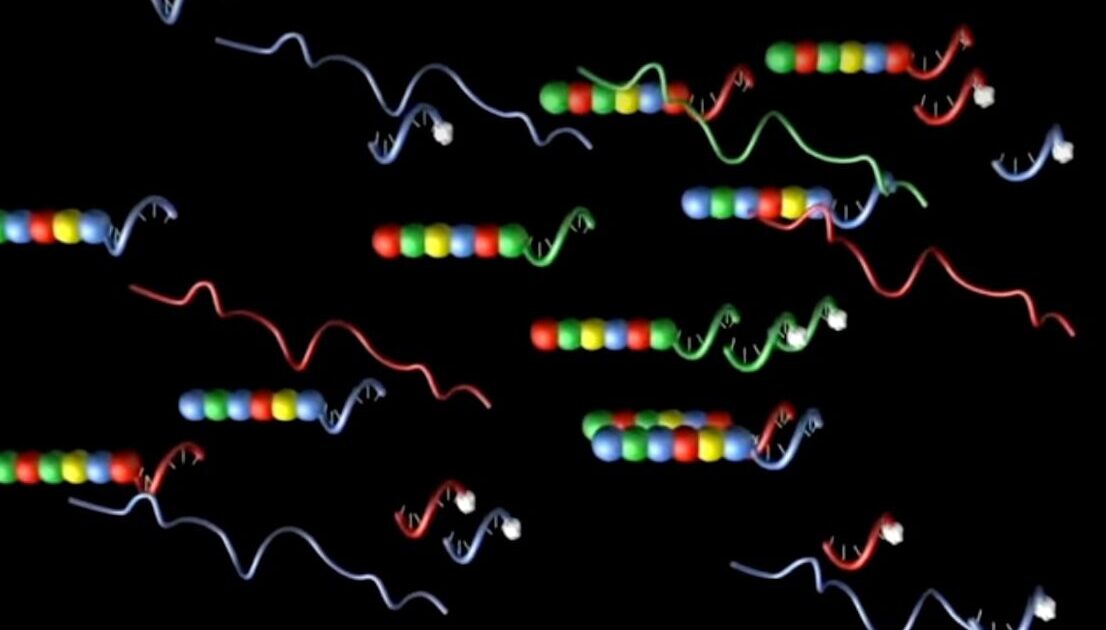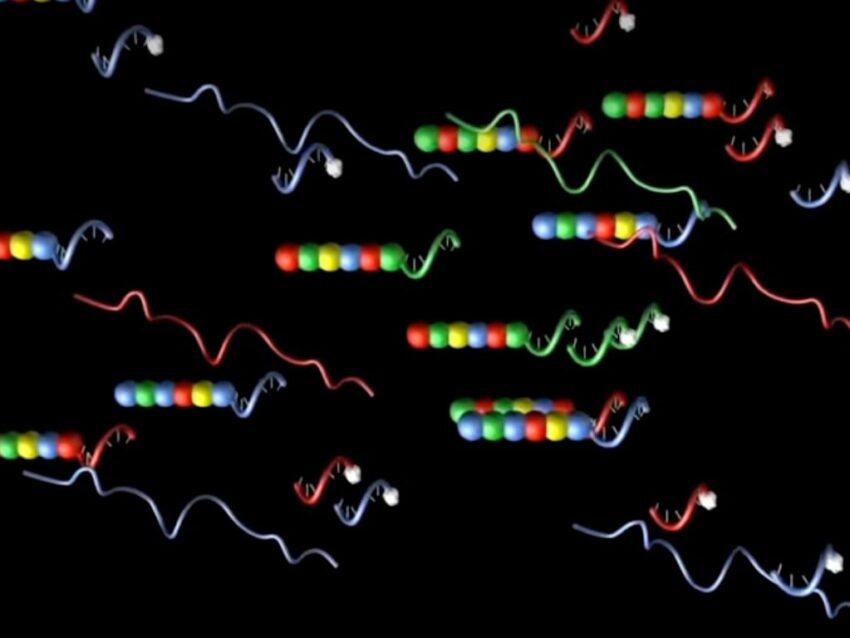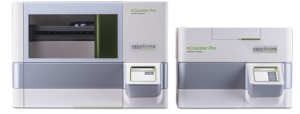
Common questions in molecular biology: What is a cell counter called?
There are several types of cell counters that go by different names, usually named after their uses or type of cell counting method.
Hemocytometers
The original cell counters are known as hemocytometers, named as such due to their original use, counting blood cells. Used in conjunction with a microscope by a trained scientist, hemocytometers incorporate a gridded slide with wells of known volumes for are now used to determine the total cell count and viability of many different cell types in various applications.
Coulter counters
Another type of cell counter is called a Coulter counter, which are based on the Coulter principle that relates to how cells can be identified based on the amount of resistance they induce in an electrical current. As cells suspended in an electrolyte solution flow from one of two compartments in the Coulter counter to the other via a pore, they alter the current that crosses the pore with a certain amount resistance that is detected by the machine and tallied. In this manner, Coulter counters can count up to 20,000 animal cells from a single sample with a high degree of accuracy.
Image cytometers
The oldest form of cell counting is called image cytometry. Image cytometers use optical microscopy for counting a large number of cells from a static image. Cells are often stained to provide contrast for enhancing detection and can also be stained to detect specific molecules. Traditionally, image cytometers use a hemocytometer to view cells as an aid to manual counting. The addition of digital cameras to image cytometers have helped to automate the process.
Flow cytometers
Flow cytometers are a common instrument for counting and sorting cells. Using the controlled flow of cells suspended in a solution to align single cells, flow cytometers characterize cells either optically or through electrical impedance detection (see Coulter counter). The addition of fluorescently labeled probes provide the ability to stain and identify specific molecules optically. Instruments that count cells in this way are called fluorescence activated cell sorters, or FACS for short. The automation inherent in flow cytometers gives them higher throughput capabilities than most other cell counters.
Cell sorters
Cell sorters are cell counters that sort cells according to their innate electrical characteristics. A subset of flow cytometers, cell sorters sort cells by sending a stream of cell-containing fluid through the machine, which is broken into droplets by mechanical vibration. The resulting droplets contain individual cells with electrical properties that depend on the type of cell contained in the droplet. Cell types can be sorted as they flow through an electric field, where the contained cell’s charge causes them to be deflected into different containers for counting.
Time-lapse cytometers
Another type of cell counter is called a time-lapse cytometer. Time-lapse cytometers are placed inside a conventional cell culture incubator to facilitate continuous observation of cells. Using a combination of time-lapse microscopy, image cytometry, and non-heat-generating light sources such as light-emitting diodes, time-lapse cytometers are used to understand cellular dynamics, especially in experiments where the staining of live cells may affect the results.
nCounter® Pro
One of the more recent cell counters is called the nCounter® Pro Analysis System. Produced by NanoString, it is not technically a cell counter per se, but instead uses DNA barcoded fluorescent probes in a hybridization protocol to examine cell-specific gene expression profiles. Based on the gene expression profiling results, nCounter Pro provides a relative cell abundance score for the predominant cell types in a sample in addition to identifying the genes playing a role in those cells. nCounter Pro can be used on nearly any sample type, from cell lysates to liquid samples to FFPE tissue samples.

Related Content




